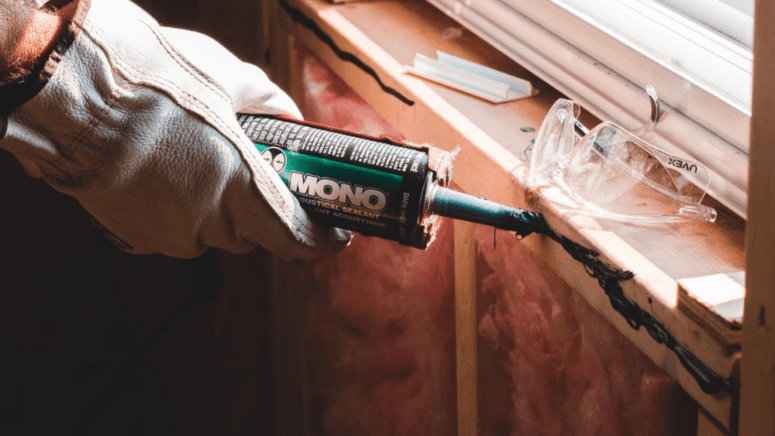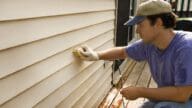Don’t Fix These 7 Things When Selling Your House
- Published on
- 14 min read
-
 Dena Landon, Contributing AuthorClose
Dena Landon, Contributing AuthorClose Dena Landon Contributing Author
Dena Landon Contributing AuthorDena Landon is a writer with over 10 years of experience and has had bylines appear in The Washington Post, Salon, Good Housekeeping and more. A homeowner and real estate investor herself, Dena's bought and sold four homes, worked in property management for other investors, and has written over 200 articles on real estate.
-
 Jedda Fernandez, Associate EditorClose
Jedda Fernandez, Associate EditorClose Jedda Fernandez Associate Editor
Jedda Fernandez Associate EditorJedda Fernandez is an associate editor for HomeLight's Resource Centers with more than five years of editorial experience in the real estate industry.
Accepted real estate wisdom says that houses in good condition bring in higher prices than houses in not-so-great condition. While that is generally true, it’s possible to “over-improve” a home to the point of losing money if the return doesn’t match the investment.
Luke Rentz is a top agent on The Rentz Team in Tulsa, Oklahoma, a team that sells homes 73% quicker than the average agent in their market. He recommends that sellers contact an experienced agent in their area before making any repairs. “A local agent will be much more familiar with popular trends and different things that are going to get you the most bang for your buck,” he says.
Knowing what to fix — and what not to fix when selling a home — can be tricky. That’s why we compiled a do-not-fix list and threw in some advice to help you determine which fixes are worthwhile and which are a waste of time, money, and effort.
How to decide what not to fix when selling a house
Before getting to the list, let’s look at three initial steps to help determine how to approach repairs as you make plans to list your home.
Step 1: Consult with a top local agent before you fix anything
Ask a top local agent what, if anything, should be fixed or upgraded. They’ll know where you can make money on necessary repairs and upgrades and where to save money by leaving some projects undone.
Aim for something between as-is and turnkey. You want to do just enough to attract buyers, but you don’t want to pour a lot of unnecessary cash into repairs and upgrades that won’t help your home sell for more, or could inadvertently discount its value.
Rentz points out that bad repairs or updates that don’t fit the current market can cost you double. “You spent that money, but someone else is pre-discounting the property to fix that repair or update you did.”
Because they know the neighborhood, as well as what the market is doing, real estate agents can provide sound insight into what work has a good return on investment (ROI) and what work could be just a waste of time. A great place to start is HomeLight’s Top Agent Insights, a report series that surveys more than 1,000 real estate agents nationwide to get a pulse on current market conditions.
“The first thing I say to my sellers is, ‘Please don’t do anything to your house until I see it.’ That’s because a lot of sellers overspend on fixing and upgrading things that don’t make a difference to the home’s value,” says Carmen Bean, a top-selling agent in San Antonio, Texas, who works with over 72% more single-family homes than the average agent in her market.
In many cases, Bean will advise sellers to wait for the home inspection report and the buyer’s requests. Then you’ll know where you need to spend money. That way, you don’t “waste” money on cosmetic changes that may be needed to fix issues discovered by an inspection.
Step 2: Determine if you will recoup your costs
Will repairs, renovations, or improvements add value and provide a good ROI? It depends on the market where you live.
According to Zonda’s 2024 Cost vs. Value Report, the top three projects that continue to rank among the highest in ROI are garage door replacement at 194% ROI, steel door replacement at 188%, and manufactured stone veneer at 153%. These projects have consistently shown remarkably high return values in previous years, as well.
Clayton DeKorne, chief editor of Zonda’s JLC Group, emphasized that exterior replacement projects remain the most effective way to increase resale value in a home.
“Sometimes a major renovation makes sense and sometimes not,” Bean says. “An experienced real estate agent can evaluate your home’s value, run the comparable home sales (comps), and calculate the ROI to see if updating makes financial sense.” To play it safe, follow the rule of thumb to not spend more than 10% of your home’s value on a kitchen remodel or more than 5% on a primary bathroom remodel.
According to the National Association of Realtors (NAR) 2024 Profile of Home Buyers and Sellers, buyers will live in their homes for a median of 15 years.
For those with no plans to move, the wish list includes sustainable features, accessory dwelling units, outdoor improvements, finished basement or attics, media centers, game rooms, home offices, outdoor spaces (not just at ground level but above as well), and AI-driven technology to make homes easier to use and more energy-efficient.
Step 3: Identify and rule out vanity fixes
Selling a home can motivate a homeowner to pull out the tattered, old to-do list. Remember that your home doesn’t have to be in showroom condition, and that it may not make sense to fix everything. Below are three warnings to consider when deciding what to fix before selling your home.
‘I always meant to fix it’
No one wants to be labeled a slacker. However, due to budget restrictions and time restraints, most homeowners have a wish list of repairs or upgrades that never got addressed. But keep in mind that the new buyer may have a different to-do list than you do, so instead, focus your efforts on completing the work that will bring you the best ROI.
However, you might want to fix something that opens up your home to different loan types. “If you have a pretty good all-around house, but there’s some wood rot or missing floorboards, it could keep you from being able to sell to a VA loan or an FHA loan,” Rentz says. “Doing certain repairs there will open up a bigger pool of buyers, which will create more competition for you.”
‘I don’t want buyers to see my house like this’
Our homes are an intensely personal reflection of ourselves. Opening up our homes to strangers for showings can cause anxiety — or even embarrassment. No one likes to be judged, which is exactly what prospective buyers are doing.
Of course, you’re nervous about strangers judging your taste, style, and home’s cleanliness. Take heart in knowing that when a buyer nitpicks the little details, it’s often a sign of serious interest in purchasing your home. Your bigger goal, according to Rentz, should be to present a home that looks like you’ve taken care of it.
“It’s an intangible that basically can get you more offers and attention and alleviate some concerns buyers have when walking the property,” Rentz says. When they walk through your house, buyers aren’t worried about what they can’t see, like what’s in the walls.
‘Fixes and upgrades will detract from unfixable property flaws’
Sometimes, no amount of upgrades or repairs will redirect attention away from major property detractions that are guaranteed to lower the sale price.
Face it, there’s nothing you can do to hide a powerline or disguise a busy street. The size of your yard or square footage isn’t going to magically grow. Nevertheless, some homeowners think that presenting an updated, upgraded, fully repaired home will offset the loss caused by an unfixable property flaw.
One of Bean’s sellers spent unnecessarily on an expensive renovation of a house that had nothing wrong with it except that it backed onto a busy highway. “They redid the kitchen cabinets, installed new flooring, and made other upgrades because they thought that it would help the sale,” she recalls.
“We still ended up lowering the price and taking a huge hit because backing [onto] the highway was a big hang-up for buyers,” Bean adds. She believes if the sellers had taken her advice, they could have saved the money they spent on fruitless improvements.
What not to fix when selling a house (do-not-fix list)
According to HomeLight’s Top Agent Insights End of Year 2024 report, 38% of agents indicate that staging a home for showings can help sell it in any market. In many cases, working with a professional to stage your home can be more beneficial than doing extensive repairs.
Some typical repairs you can usually skip include:
1. Cosmetic flaws
Many cosmetic issues are typically easy to fix: painting and landscaping, for example.
Consider quick, affordable fixes that can make a significant impact. While these aren’t top priorities, they can be worthwhile if they enhance your home’s appearance for potential buyers.
However, some cosmetic flaws may be a little more involved, such as replacing old countertops in the kitchen or bath. Other issues may fall somewhere in between, such as a few cracked tiles, outdated finishes, or minor scratches on hardwood floors.
If you have the home improvement skills to complete some of these projects, you may want to do them, depending on how much time and money will be needed. “Fixing caulking that’s cracked, touching up grout, small drywall repairs, cleaning the house really well, or a fresh coat of paint on the walls” helps present a clean house that seems well taken care of, Rentz says. “It can make a big difference.”
If you’re not a do-it-yourselfer, however, you could risk causing further damage or spending more money than a project is worth. Your home doesn’t need a complete makeover to sell. “Normal wear-and-tear is to be expected,” Bean points out, “so there’s no need to address most cosmetic issues unless there’s a serious, underlying problem.”
2. Minor electrical issues
If your home has old wiring, exposed wires, an outdated electrical service panel, dangling light fixtures, standard circuit breakers, or ungrounded outlets, you’ll have to address these safety hazards before listing your home for sale.
But innocuous electrical issues — loose outlet plugs, dead outlets, or a light switch that goes to nothing — may not need to be addressed. “Most of the time, the inspection report will just note that wobbly sockets are not tightened enough, and the light switch isn’t even mentioned,” Bean says.
3. Driveway or walkway cracks
Most agents recommend that sellers improve curb appeal prior to listing a home for sale, as homeowners can gain both financial and emotional benefits from remodeling outdoor features.
Typically, curb appeal includes features like freshly mowed grass, mulched flower beds, neatly trimmed shrubs, a fresh coat of exterior paint, a couple of cozy chairs on the front porch, and a nice mat at the front door.
Rentz says that “some landscaping on the outside and bringing it up to date, doing a bit of tree work, or cleaning your grounds are simple fixes and updates that can make a big difference.”
Few buyers are so nitpicky as to let minor driveway or sidewalk cracks ruin a sale. In fact, Bean says, “Hairline cracks are very common here in San Antonio because we have a lot of soil movement, so a driveway or walkway crack isn’t going to scare a buyer off unless it’s huge enough to be a potential hazard.”
4. Grandfathered-in building code issues
Building codes evolve over time. Therefore, a house built in 1980 likely won’t meet all the current codes. That doesn’t mean you need to bring everything up to current standards to sell your home. If the home was legally constructed in compliance with the building codes of the day, it is typically considered “grandfathered in” and does not have to meet current codes.
Nevertheless, a home inspection will note these aberrances. As Bean points out, “By law, home inspectors have to address all of the building code items in their inspection reports. But the sellers don’t have to update the house to current standards because the home is grandfathered in.” She adds that the buyer can upgrade the house to current standards if they choose; however, many agents would advise against it.
Building code violations are common. Even if yours isn’t grandfathered in, you may not need to correct it to sell.
5. Partial room upgrades
If you don’t have the time or budget to finish an upgrade or remodel, it’s probably better not to start it because it’s difficult for buyers to visualize the completed effect if you’ve left work undone. Besides, replacing only one cabinet or a couple of fixtures will just point out how badly the rest of the room needs renovating.
“A partial remodel never looks good,” Bean agrees. For example, she says it “makes no sense to put in a new vanity, but keep the 1980s linoleum floor.” When you do a partial room upgrade, you’re not adding value. It may look as if you’re trying to hide something rather than just updating it. You either need to do the whole room or just leave it be.
But do consider if an upgrade would bring your home up to the same level. “It’s not okay to remodel one part and have the rest of the house be lackluster,” Rentz says. “If you have a guest bathroom that’s very out of date, it might be worth it to remodel and bring the house to the same level as the rest of your home or the neighborhood.” If you already remodeled the kitchen five years ago, but your bathroom still has tile and fixtures from the 1950s, talk to your agent about local buyer expectations.
6. Removable items
Sometimes, it’s easier simply to remove worn or dated items rather than replace or update them. It can also save money. For example, according to HomeAdvisor, professionally installed window treatments cost an average of $1,028.
Some sellers want to take removable items with them, but it’s not always possible, even if those window treatments fit in your new home. “In Texas, sellers were free to take the curtain rods and valances, but now they are considered a part of the house,” Bean says.
However, if they’re not in good condition, if they’re dated, or if they make the room too dark, instead of leaving them behind, just take them down before listing the home — and don’t replace them. It’s the ultimate in quick, inexpensive prep!
7. Old appliances
If appliances are mismatched, more than 10 years old, not energy efficient, severely worn, barely functioning, broken, or missing, it can hurt your home sale. Replacing them with brand-new appliances can add value to your home, but Bean says that’s not your only option.
“If your appliances are really old, ugly, and barely working, I would advise saving money by replacing them with used appliances versus buying brand new appliances that cost thousands of dollars,” Bean says.
If you decide to buy new, you don’t have to go high-end, top-of-the-line to impress a buyer; new, standard appliances will still add a lot to your home’s overall impression.
Seek to show potential, not perfection
Don’t be tempted to fix everything you think is wrong with your house; you’ll either lose money or price it out of the market. When you prepare your house for sale, remember that your goal is to show its potential, not to polish it to perfection.
An experienced real estate agent can help you craft your own fix and do-not-fix lists so you get the most out of your home sale. If you don’t have an agent, you can find a top-performing agent in your area with HomeLight’s Agent Match. This free platform analyzes millions of transactions and thousands of reviews to identify the right agent for you.
Writers Christine Bartsch and Lori Lovely contributed to this story.
Header Image Source: (Africa Studio / Shutterstock)
FAQs on selling a house that needs fixing
Sometimes, it’s not the state of the house that results in a low price but rather the owner’s eagerness to overshare. Avoid sharing negative details about the home, like past repairs, structural concerns, or why you’re selling. Instead, focus on the home’s strengths and let the buyer’s inspection reveal any issues.
If repair costs outweigh the potential return or the home is in poor condition compared to local market standards, selling as-is might be the better option. When considering selling as-is, ask your agent about the price implications, particularly how much do you lose selling a house as-is.
Signs your house will sell fast include fixes that show the buyer it has been maintained over the years and is well taken care of. Prioritize cost-effective updates like fresh paint, minor repairs, and curb appeal improvements. Fix obvious issues that could deter buyers, such as leaky faucets or damaged flooring.
Considering what to fix when selling a house and wondering when is a house not worth fixing? Major issues like foundation problems, outdated interiors, poor curb appeal, and neglected maintenance can lower resale value. However, overpersonalized or poorly executed renovations can also turn buyers away.
- "The 2024 Cost vs. Value Report Proves ‘Curb Appeal’ Still Drives Highest Value for Home Improvement Projects," Zonda (April 2024)
- "How Much Should You Spend Remodeling A House For Max Profit?," Financial Samurai (February 2025)
- "AI at Home: Five Ways AI is Enhancing Smart Living," NAR, Brandon Doyle (March 2024)





